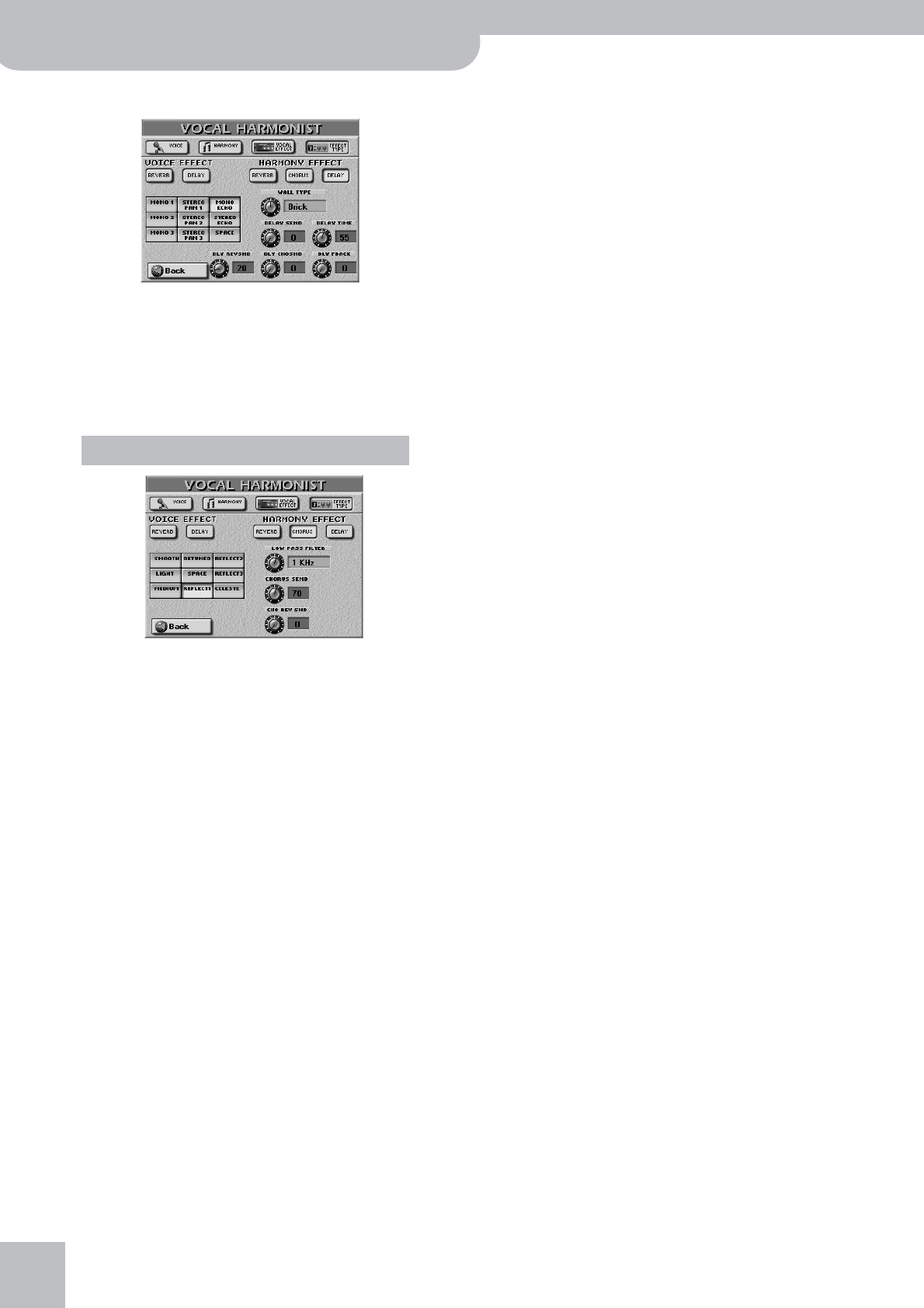
Using the mixer functions & effects
110
r
G-70 Music Workstation
■Delay for HARMONY EFFECT
The presets on this page are different, while there is
also one more parameter you can set (see above for
the others):
● DLY®CHO SND—Sets the amount of delay sound that
is sent to the Chorus processor. Higher values mean that
the delay portion will be more prominent in the chorus
signal.
• Press the field of the chorus type you wish to use.
Note: The preset you choose affects the settings of the param-
eters below. Always start by selecting the type and then set the
programmable parameters.
The names of these types ([SMOOTH]~[CELESTE]) are
probably self-explanatory. You may notice that the
Chorus character changes as you select different
types.
• Press the field of the parameter you wish to edit, and
set the desired value with the [DATA÷ENTRY] dial or
the [DEC]/[INC] buttons.
The three knob icons allow you to alter the selected
Chorus type.
● LOW PASS FILTER—A low-pass filter can be applied to
the sound sent to the Chorus processor to cut the high
frequency range. Higher values will cut more of the high
frequencies, resulting in a mellower chorus sound.
● CHORUS SEND—This parameter reflects the setting on
the “Vocal Effect” page. It was provided so that you do
not need to switch pages while editing the Chorus pro-
cessor.
● CHO®REV SND—This parameter sets the amount of
Chorus sound that will be sent to the Reverb. Higher val-
ues result in more Chorus sound being sent. The value
“90” effectively allows you to connect the Chorus and
Reverb effects in series (Chorus before Reverb). If you do
not wish the Chorus signal to be processed by the Reverb
effect, set this value to “0”.
(5) Press the [EXIT] button to return to the main page.
Note: The first thing to do now is probably to write your set-
tings to a User Program (page 111).
Note: For certain parts, there is also an equalizer. See pages
132 and 135 for how to set them.
Chorus (HARMONY EFFECT)


















